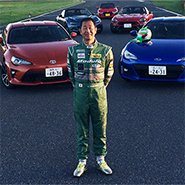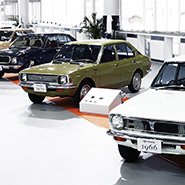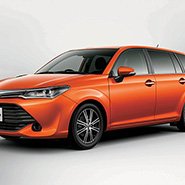Nov. 12, 2016
The Full Text of the Passionate and Lively Discussion between a Corolla Geek and a Corolla Master
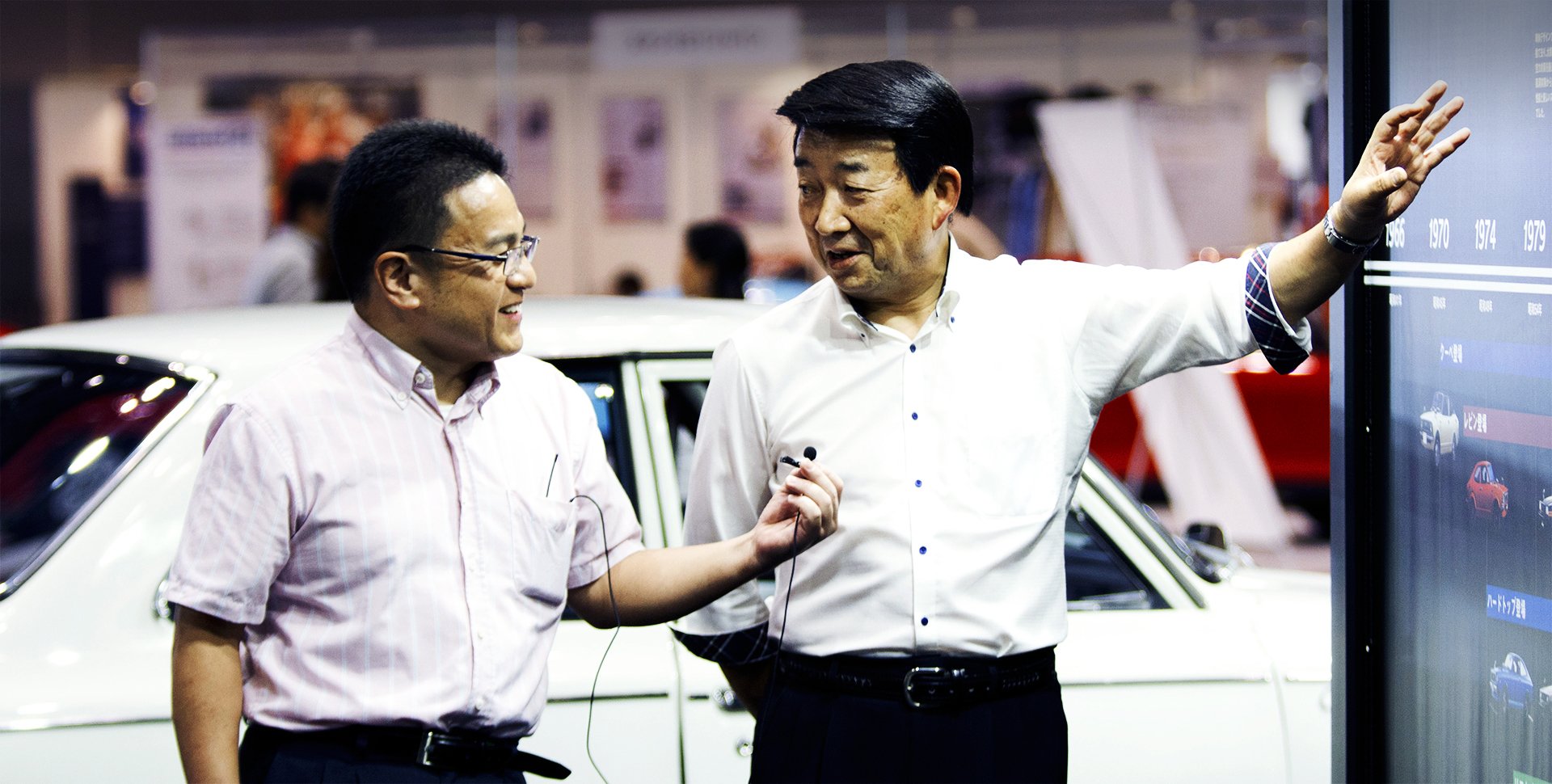
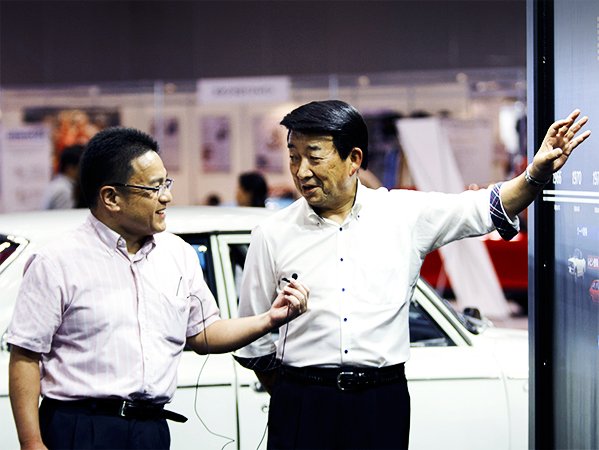
The Full Text of the Passionate and Lively Discussion between a Corolla Geek and a Corolla Master
Kobayashi (hereinafter “K”): “I’d like to begin with the fourth generation, since for the both of us, our involvement with Corollas began with that particular generation. The four-round headlamp setup used with the early fourth generation sedans was extremely striking. Was the intention to use that setup from the very start?”
Ohira (hereinafter “O”): “During the development stages, there was talk of giving the fourth generation a luxurious feel. During subsequent planning stages, we felt that using a two-round headlamp setup - which was a typical setup in those days - would seem a little inadequate, so we considered employing the four-round headlamp setup right from the start, with the aim of adding impact to the vehicle. And when it was released, the fourth generation most certainly did have impact.”
K: “I remember the nice sound the doors made when they were opened and closed. Am I right in thinking you were particular about the sound of the doors?
O: “Yes, we paid particular attention to the sound the doors made when they were closed as well as to the sound of the engine, and so on. Do you remember the louvers on the C-pillars (an arrangement of narrow plates set diagonal to the surface of the vehicle)? The louvers were designed to let air out of the vehicle. When a vehicle’s doors are slammed shut, the air pressure in the cabin increases, and that makes it more difficult to close the doors since the air inside the vehicle has nowhere to escape to. Therefore it is necessary to provide a way out for the air. The sound of a vehicle door closing involves the sound of metal parts locking together, so we added plastic to those parts to enhance the sound. The more particular you are about the unseen aspects of a vehicle’s design, the better the vehicle becomes.

Mr. Kobayashi, the Corolla Geek (on the left) chats with Mr. Ohira, the Corolla master (on the right)
K: “The fifth generation sedan was the first in the series to employ an FF layout. What lay behind that decision?”
O: “Vehicles with an FF layout have no floor tunnel in the center of the cabin because they don’t need a propeller shaft to transfer motive power to the rear wheels. The main benefit is that it creates a greater sense of space inside the cabin. In addition to that, removing the propeller shaft also makes the vehicle lighter, and that enhances fuel efficiency. For those reasons, we thought that using an FF layout was the best option for the fifth generation, but with the sportier Levin, we stuck with the FR layout because an FF layout would reduce the sportiness of its performance. Although that unfortunately increased the variance within the series, we managed to gain the understanding of the production division and other divisions by setting out a clear policy of always using FF layouts with the sedan version, and then FR layouts with the sports coupes. As an additional model, we added a two-box style hatchback called the “FX” (an abbreviation of “Future 2boX”). The hatchback was the first Toyota vehicle to feature a “full-color” paintjob, in which the bumpers, side moldings, mudguards, side mirrors, and so on were painted the same color as the vehicle body. Other manufacturers subsequently followed our example.”
K: “When the fifth generation was released you used (pop singer) Hiromi Go in the advertising campaign to underscore its youthful image, but minor model changes were also made to increase the luxurious image associated with the Corolla brand….”
O: We used Hiromi Go to attract younger drivers to the fifth generation, and although there were a considerable number of consumers who wanted the Hiromi Go posters which we had displayed in Toyota dealerships, there was an initial period in which the vehicles themselves didn’t sell very well at all. Despite employing a design aimed at rejuvenating the series, there was a time lag between the development stage and the official launch, and within that time vehicle design trends had moved on. The initial design was considered too boxy, so we made some minor changes to give the vehicles a more sculpted and luxurious look and the response from customers improved immediately.
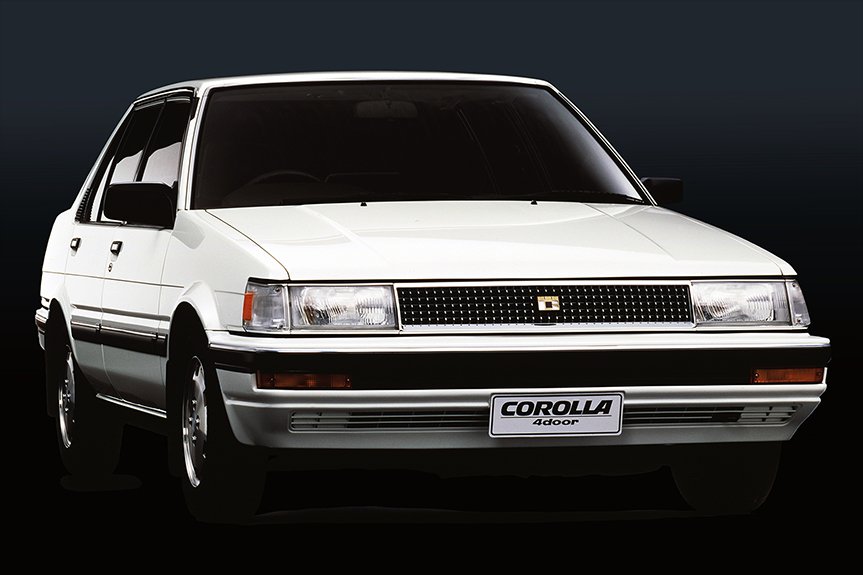
The minor change of the fifth-generation Corolla endeavored to add more depth and grandeur to the Corolla’s embossing and exterior
K: “When the sixth generation Corolla was delivered to my home, I remember being surprised by the high quality styling. The soft padding on the dashboard was particularly striking to me.”
O: “As you know, the dashboard has a meter hood above the instrument panel (to provide shade from sunlight). Instead of hard plastic, we used soft materials on the meter hoods in a number of generations of the Corolla. Since the soft material feels good to the touch, we did our best to employ it through a number of generations as a feature characteristic of the Corolla. We were keenly aware of the fact that when customers first get into display vehicles, many of them touch the instrument panel. Although cost issues led us to change back to hard plastic materials from the tenth generation, we prevented the material from giving a cheap impression by using a textured finish and so on.”
K: “Certain grades of the sixth generation vehicles with the Super White II body color featured a maroon interior. Why did you choose that color?”
O: “At the time, the Mark II featured maroon coloring and it proved to be a major hit. We used maroon in the Corolla as well, so as to give it a more mature and luxurious image. And, as expected, luxury styling attracted many customers, and it also proved to be a major hit.”
K: “In the integrally molded ceiling, you provided hollowed spaces for the sun visors to fit into and in top-of-the-line vehicles the back of the sun visors were also upholstered with cloth. Were those also aspects that you were particular about?”
O: “That feeling of being able to store sun visors neatly away was something we were conscious of. We also upholstered the back of the sun visors because we felt that vinyl with a leather finish wouldn’t provide a sufficiently high textural quality.”
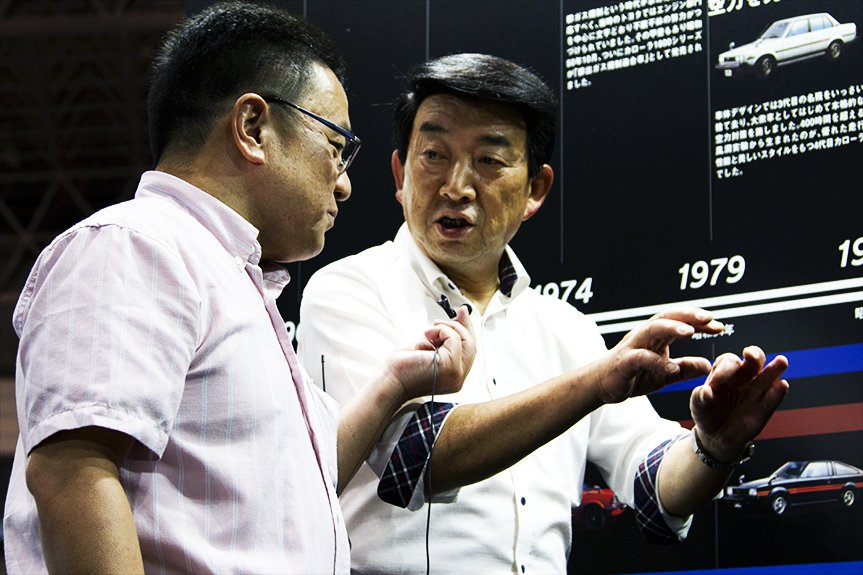
K: “What aspect of the seventh generation left the biggest impression on you?”
O: “With the seventh generation, we were particularly conscious of North American safety standards, and we therefore increased the body length and the thickness of the doors. For the domestic market, we added the four-door hardtop Ceres to the Corolla lineup. We targeted young women with the Ceres, and aimed to create a “fashionable hardtop” with an exterior that had emphasized curves.”
K: “The eighth generation involved a model change of a somewhat different nature to what had come before….”
O: “With the collapse of the bubble economy, there was a strong demand for cost reductions even in the vehicle development process. We developed the eighth generation within that environment. We carried out a range of cost reductions, including leaving parts of the bumpers and side moldings black and unpainted, but as expected, there were a large number of comments to the effect that the eighth generation lacked a high quality feel. We immediately moved to color those unpainted parts but even before we did so, it seems that various dealerships actually went and painted them themselves.”
K: “The minor changes to the eighth generation involved some fairly dynamic enhancements, didn’t they?”
O: “We carried out a model change for the overseas markets after the model change for the domestic market, but it ended up being substantially different to the domestic version. With some minor changes to some of the overseas version vehicles, we were able to unify the design. That was what was behind the bold minor changes that we had made.”

K: “Were you particularly conscious of making the ninth generation a global model?”
O: “While we were conscious of making it a global model, the fact that we had struggled with sales of the eighth generation gave an added impetus to the idea of creating a brand new Corolla, and we worked on developing the ninth generation with the intention of starting again from scratch. It was quite an ambitious model which had been equipped with a wide range of new features, and was a well-made vehicle as well, and it turned out to be a major hit.”
K: “The tenth generation gave the impression of a substantial increase in size….”
O: “There was a natural shift toward larger vehicle sizes, but as indicated with the reduced size of the eleventh generation, we felt that with the tenth generation, we had probably reached the upper limit in terms of size, particularly with regard to models targeting the domestic market.”
K: “The eleventh generation provided outstanding visibility performance, didn’t it?”
O: “Yes it did. We pursued the need for outstanding visibility performance. Apparently we had received inquiries from certain driving schools in Japan who said that they are interested in using them as driving instruction vehicles, partly because of that. Perhaps because of the good visibility, we hear that students are able to graduate more quickly when using them to learn to drive.”
K: “Which of the generations do you personally feel is the best?”
O: “As you might expect, the sixth generation. I think that it was a well-balanced vehicle, in terms of size, length, finish, luxuriousness, and every other aspect. I believe, however, that with each generation, we aimed to create the optimal vehicle for the particular era in which they were released. Although my involvement with the development of the Corolla ended in 2015, I hope that the people who are working on the development of the future generations of the Corolla will inherit the spirit with which Corollas have been developed over the generations, and that they will keep in mind the idea of creating better, and better Corollas that meet the demands of customers of each era. I would definitely also like customers to continue to expect the Corolla to evolve with the passage of time.”
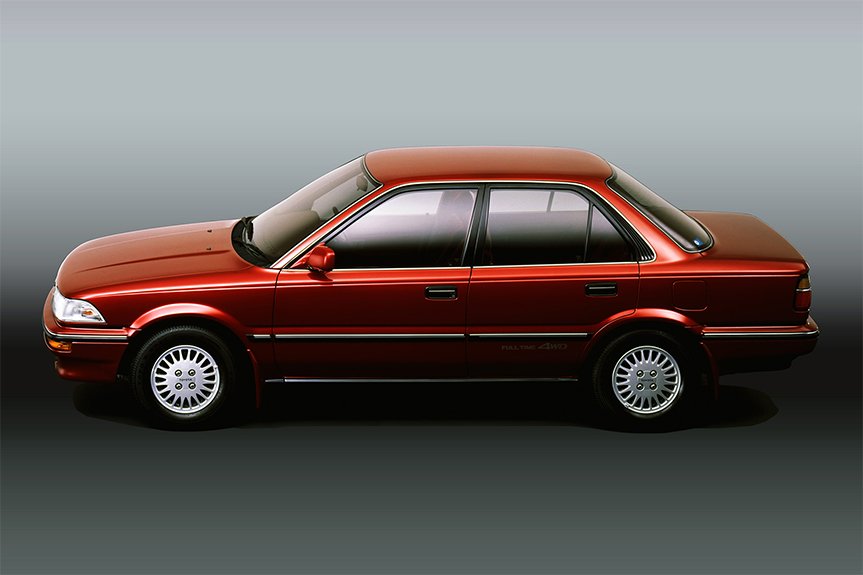
Corolla Ohira thinks that the sixth-generation is the best. In 1990, it hit record high sales of more than 300,000 units in Japan
Atsushi Kobayashi (Freelance writer)
Mr. Kobayashi grew up in a household with a fourth generation Corolla, and the vehicle turned both him and his parents into Corolla fans. Before he knew it, his infatuation with Corollas led him to find employment at a Corolla dealership. While delving more and more deeply into his research into Corollas Mr. Kobayashi suddenly found himself switching to a job at an automobile magazine publisher. He subsequently became a freelance writer. If one includes the Corollas his parents owned, he has been the owner of ten consecutive Corollas. His wide-ranging knowledge of Corollas covers not only domestic models, but also Southeast Asian and North American models.
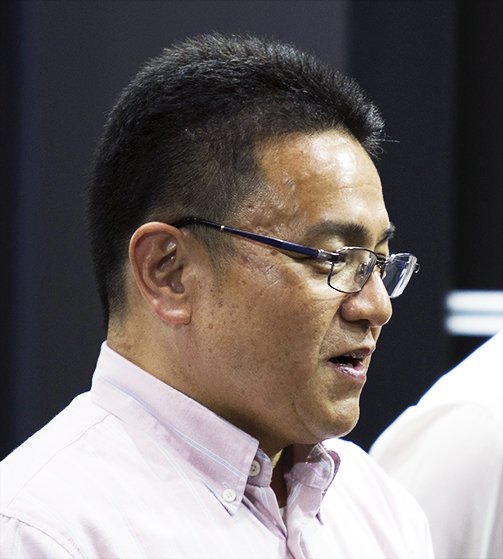
Shinji Ohira (Former engineer at Product Planning of the Corolla, Toyota Motor Corporation)
Mr. Ohira joined Toyota in 1968. After his assignment at the Prototype department, he was transferred to Product Planning in 1977 and started working on product development of the Corolla. Since then, Mr. Ohira had dedicated himself to the product planning of the Corolla for approximately 38 years, from the fourth-generation Corolla through to the eleventh-generation Corolla. He retired at the legal retirement age on August 2015.
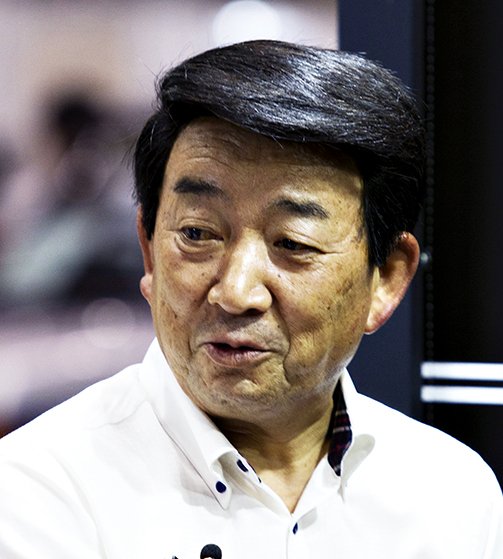
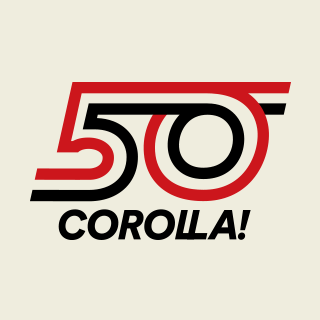





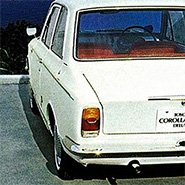
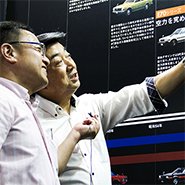
![Corolla geek meets the Corolla master [column]](/pages/corolla50th/feature/corolla_enthusiast02/images/feature_corolla_enthusiast02_w185.jpg)
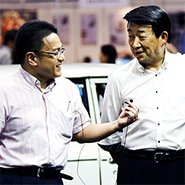
![[Movie] Keiichi Tsuchiya's driving impression of the AE86 Corolla Levin](/pages/corolla50th/feature/ae86/images/feature_ae86_w185.jpg)
